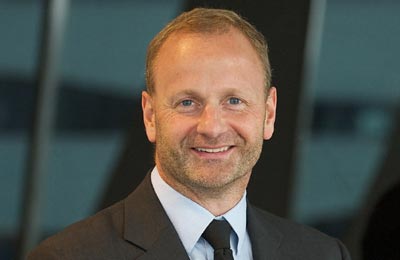
Steen Jakobsen
2013: the year of financial transition
Dubai, January 20, 2013
This year will be about bridging the huge reality gap between improving conditions of the financial system with the still stumbling real economy – a job that is far bigger than consensus seems willing to admit, a report said.
The lack of confidence among small businesses in the US – a segment that represents 65 per cent of all jobs and growth in the US – is the reason that Saxo Bank is below consensus on Q1 growth for the US but also the world, the bank said in its financial outlook for Q1 2013.
The consensus for 2013-Q1 US GDP is +1.6 per cent but Saxo Bank says it will be closer to +0.8 per cent.
In Europe, Saxo Bank believes this year will be a critical test for Germany’s attitude toward the EU project. The Germans are being forced, step by step, to accept debt mutualisation and this will have a huge impact on not only Germany’s credit rating, but also its export numbers.
The bank predicts that the painfully high unemployment rate and waning growth will make Club Med more forcefully call for all-in measures from the ECB similar to what the US Fed is doing. The ECB board has a majority for printing money and this will leave the German Bundesbank contingent very isolated.
Saxo Bank is increasingly worried that violations of the EU Treaty once again will be ignored when Europe-wide unemployment keeps rising in coming months.
In Asia, the bank will keep an eye on China and its need to change its business model. China’s economic experiment is now one generation old, having been born in 1979. China’s next step is to move through the eye of the needle – evolving from the world’s largest “emerging” economy to a fully developed superpower.
In its quarterly outlook, Saxo Bank lists three key changes China will need to make this transition:
1. Increasing competition to reduce corruption;
2. Deeper and more developed domestic capital markets to cater for increased wealth and its storage, and, most importantly;
3. An extension of social welfare programmes, particularly healthcare.
All of these will help secure the hand-over from an economy over-reliant on infrastructure building and exports to one that is balanced with domestic consumption demand. This will only happen if the propensity to save is reduced through a more comprehensive social safety net, otherwise the average Chinese will keep his 40-50 per cent savings rate forever.
Steen Jakobsen, chief Economy, Saxo Bank A/S, said: “Our old theme of supporting the micro economy is still our main message for 2013, as it was in 2012. We need more micro, and less macro, because the only real multiplier that works is a belief in ourselves rather than in money printing.
“However, we are not that pessimistic on the prospects for 2013. The downside for risk and the economy in 2013 comes down to this being a year of transition, where, first, we will try more of the same, but we will increasingly see the admission that time is running out and that something new must be tried – and that’s a good thing. The 99 per cent are ready for change now but when will policymakers wake up?” – TradeArabia News Service







